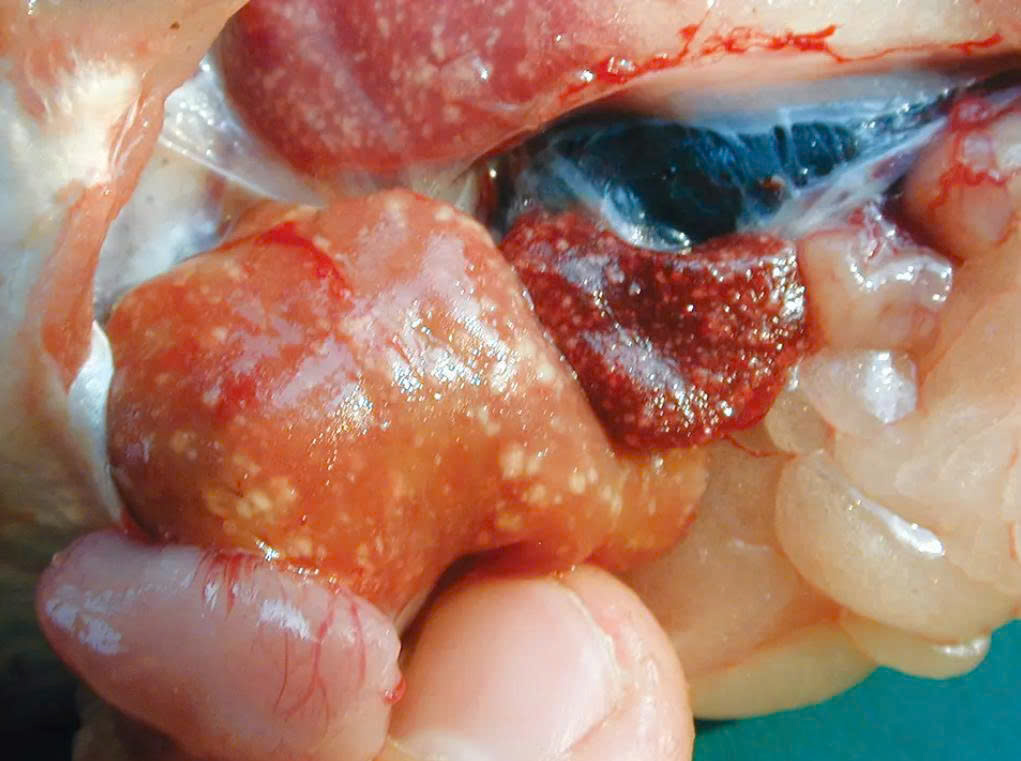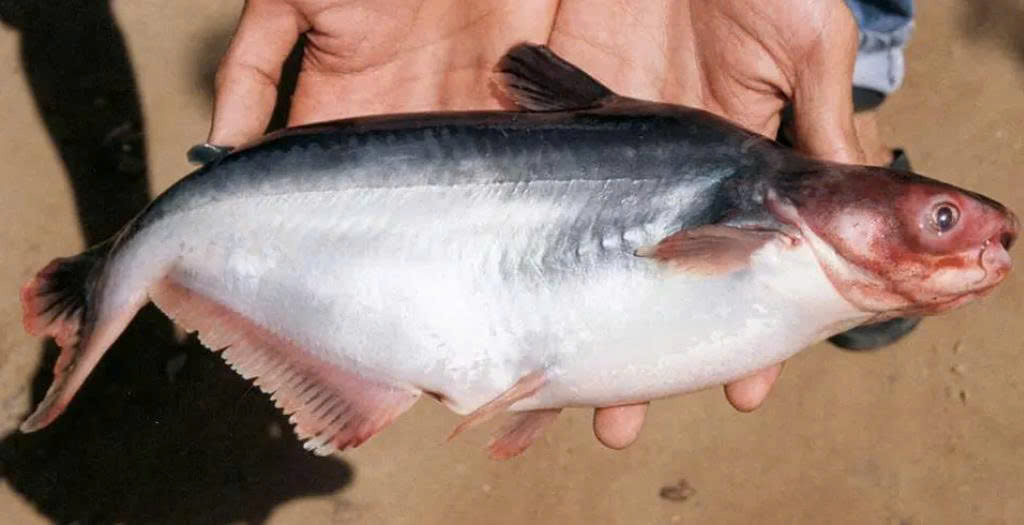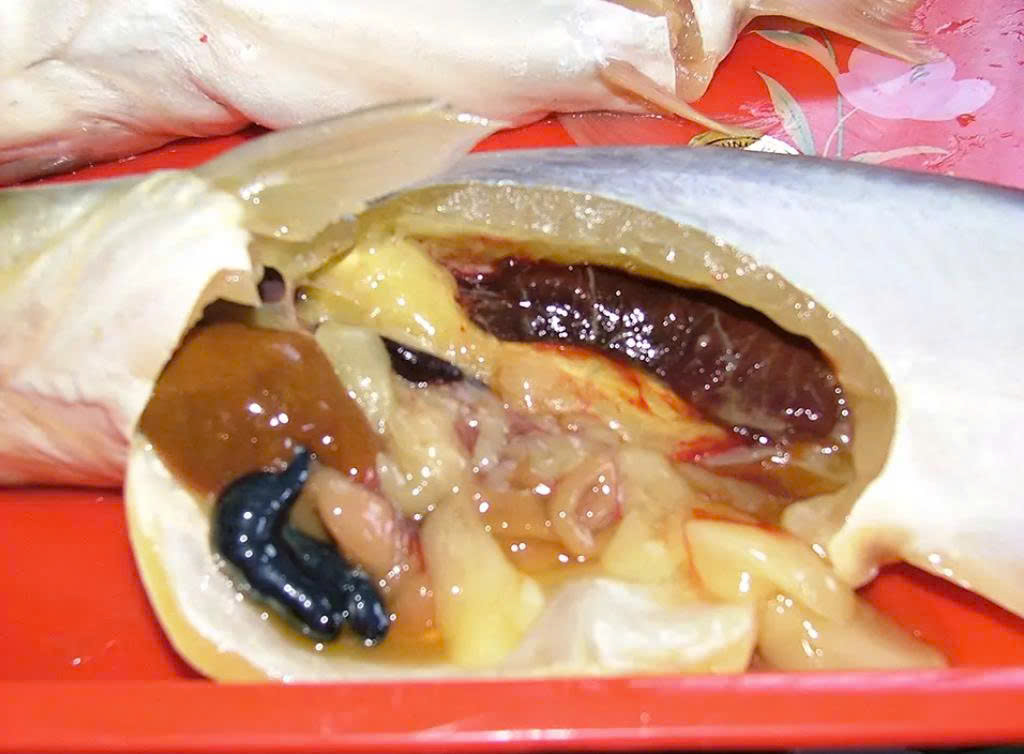The clinical signs of Edwardsiella ictaluri infection in pangasius are numerous white spots on the kidney, spleen and liver:

Figure 1: Clinical signs of Edwardsiella ictaluri infection in pangasius
1. Infectious diseases
1.1 Bacterial Conditions
Bacillary necrosis of pangasius (BNP) is a severe bacterial infection caused by E. ictaluri, affecting all fish ages, with high mortality rates in fingerlings and juveniles. The disease peaks during rainy seasons and is widespread in the Vietnamese Mekong Delta. Careless treatment has led to antimicrobial resistance in E. ictaluri treated with oxytetracycline or sulfonamides. Further research is needed to control the disease and develop vaccines.
Red spot disease, caused by motile Aeromonas species, causes general septicemia in fish. It causes hemorrhages, swollen vents, and pink to yellow ascitic fluid. Symptoms include hemorrhages, red vents, and gas in the gut. Reducing stocking density and maintaining high-quality health management can reduce the disease.
Aeromonas infections in Pangasius catfish cause petechial hemorrhages on the head, around the mouth and on the base of fins. Often the abdomen is enlarged with pink to yellow fluid:

Figure 2: Aeromonas infections in Pangasius catfish
1.2 Ectoparasites
Monogenea group includes gill and skin parasites, such as Thaparocleidus, which cause seasonal infections in pangasius catfish. Symptoms include slow swimming, mucus sloughing, and pale gills. Infected fish have reduced appetite and become vulnerable to bacterial infections. Trichodina and Epistylis species cause heavy infections, causing mortalities during nursing periods. Infestation symptoms include breathing difficulties, anorexia, dark gills, fish swimming, and fin erosion. Treatments include copper sulphate or formalin.
White spot disease, caused by Ichthyophthirius multifiliis, is a difficult-to-treat ectoparasite affecting fry, causing high mortality rates in five to seven days at 25 to 28 degrees-C.
1.3 Endoparasites
Microsporidians, obligate intracellular parasites, can cause disease in catfish, potentially reducing fillet quality and appeal, despite not being considered significant catfish parasites.
Myxobolus and Henneguya species are Myxozoa species found on pangasius catfish, causing infections in kidneys and gills. There's no effective treatment, but drying and liming ponds can control the disease.
The flagellate blood parasites of the Trypanosoma species are frequently found in farm-reared P. hypophthalmus. Flagellate infections do not produce any apparent pathological changes in the fish, and are therefore of questionable pathogenicity.
Balantidium and Ichthyonyctus species are ciliate protozoa found in the large and posterior intestines of juvenile and adult pangasius catfish. The pathogenesis of the organisms in pangasius is unknown. No therapy is applied.
Signs of yellow fillet syndrome in Pangasius include discoloration of the fillet, pale light-yellow gills, yellow brown-green liver and a dark spleen. Yellow fluid is often encountered in the body cavity:

Figure 3: Signs of yellow fillet syndrome in Pangasius
2. Noninfectious diseases
Red fillet syndrome is a noninfectious disease affecting adult catfish, causing red spots in fillets and making them unmarketable due to poor quality. The condition disappears with reduced feed ration and improved water quality.
Yellow fillet syndrome, a common occurrence in adult P. hypophthalmus during flooding, is often linked to external parasites, making these fish susceptible to bacterial infections.
Anemia, weight loss, ascites, and yellowish fillet discoloration are common clinical signs in culture ponds. Regular monitoring and mechanical aeration, especially during flooding, reduce the issue.
References: Tu Thanh Dung Nguyen, Thi Nhu Ngoc Nguyen, Quoc Thinh, Dang Thuy Mai Thy, Nguyen Anh Tuan, Andrew Shinn and Margaret Crumlish - Global Seafood

 Facebook
Facebook  Youtube
Youtube  VN
VN

 Youtube
Youtube  Linkedin
Linkedin  Facebook
Facebook 
